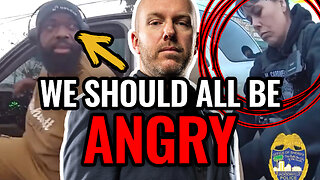Premium Only Content

Trauma Kits
Ex-prosecutor (and ex-national ski patroller) Tom Grieve explains why he carries trauma kits in his vehicle and why you may want to consider it... while discussing and acknowledging the very real risks coming from hyper aggressive prosecutors more interested in convictions than justice. He breaks down what you need to know in plain English.
I got a number of inquiries about what I thought about trauma kits following a video posted by "Armed Attorneys." I want to be clear that I like their channel and agreed with nearly all of their analysis (in this and all of their other videos that I have seen).
Generally most trauma kits come with some form of PPE such as gloves, or a mask, trauma scissors, 1 tourniquet (sometimes 2), 2-3 trauma dressing (provides constant pressure for treatment of wounds), several hemostatic dresses (a way to deal with bleeding when a tourniquet is not an option), and 1-3 options for chest wounds (to return pressure to lungs for sucking chest wounds/lung punctures to allow the patient to breathe). More advanced packs may include needles for chest decompression and it can really scale up immensely.
Just remember that possessing the kit does NOT make you trained. Buying a guitar does not make you a rockstar: you need to learn how to play it. The exact same thing applies to trauma kits, firearms, cars, etc. You need the mental software to properly use the trauma kit hardware if you want to be effective and part of the solution, not the problem.
If you do decide to go this route, I STRONGLY suggest training with people who know how this stuff works. Do research on what is the proper gear to carry: it may not be the cheapie kit that you see on some website. When you get it, make sure you are familiar with everything works and how it is packed. I suggest purchasing two or more kits so that you can do this with at least one of them in case they are vacuum sealed.
-
 12:51
12:51
Tom Grieve
27 days ago $0.11 earnedWOAH Cop Disarms + Shoots Conceal Carrier!
4193 -
 2:27:12
2:27:12
Nerdrotic
9 hours ago $30.04 earnedCIA JFK Assassination Documents | Forbidden Frontier 097
80.3K29 -
 4:02:43
4:02:43
Alex Zedra
6 hours agoLIVE! Verdansk all night <3
31.3K12 -
 1:22:13
1:22:13
Sarah Westall
8 hours agoTruth about Gila Monster Snake Venom & the Miracle of Peptides for Human Health w/ Dr. Diane Kazer
75.5K19 -
 2:18:43
2:18:43
Tundra Tactical
7 hours ago $3.89 earned$3200 ZEV HEARTBREAKER Contest!!!
38.5K1 -
 LIVE
LIVE
EuphioniaStudio
5 hours ago $3.83 earnedIt's BAAAASED, MARIO! | Mario Party 4
642 watching -
 2:48:34
2:48:34
Adam Does Movies
15 hours ago $6.11 earnedAll The Big Movie Announcements From CinemaCon 2025- LIVE!
52.8K -
 1:07:30
1:07:30
Josh Pate's College Football Show
8 hours ago $4.97 earnedBig CFB Changes Coming | USC + Texas + Alabama In 2025 | Truth About Officiating | I Am Engaged
50.2K1 -
 4:43:40
4:43:40
Biscotti-B23
11 hours ago $2.38 earned🔴 LIVE VIEWERS VS MEMBERS BEEF 🔥 FINDING A NEW MAIN ⚔ BLEACH REBIRTH OF SOULS
42.6K2 -
 3:21:55
3:21:55
DTDUBtv
8 hours agoOUTLAST TRIALS WITH SARAHSLOTH17
35.7K1